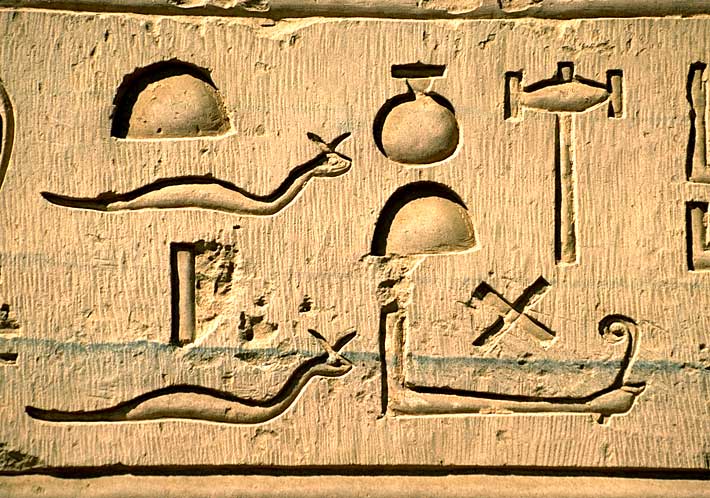Art in Egypt

Egyptian art was commissioned to be used in tombs and temples. Art in Egypt had to follow strict rules. The art murals in Egyptian temples were designed to help speed the journey of the kings to the afterworld.
Egypt developed writing during the first two dynasties. The form of Egyptian writing was called hieroglyphics. They were characters used as picture signs. Initially hieroglyphic were carved on stone, later they were placed on papyrus.
Art in ancient Egypt was not merely a form of aesthetic expression but an integral aspect of daily life, religious practices, and a vivid reflection of the society’s cultural values and beliefs. From the predynastic period around 5000 BC through the Greek-influenced Ptolemaic period ending in 30 BC, the multifaceted art forms of ancient Egypt vividly narrated the lives, philosophies, and religious ideologies of this fascinating civilization.
Ancient Egyptian art was highly symbolic and adhered to specific conventions. Hierarchical proportion, a technique where figures were represented according to their societal status, was ubiquitous. Thus, Pharaohs were usually depicted as larger than others, showcasing their divine status and importance. A composite view was often used for human figures, with heads in profile but torsos facing forward, which was emblematic of Egyptian artistic style.
Architecture was a significant form of art in ancient Egypt, primarily seen in the construction of grandiose pyramids, temples, obelisks, and statues. The architecture not only demonstrated the Egyptians' advanced engineering skills but was also considered a way to achieve immortality, as in the case of the pyramids that served as eternal homes for the pharaohs.
Ancient Egyptian temples were often adorned with intricate relief sculptures and colorful wall paintings, serving as both a religious monument and an artistic canvas. These wall depictions, laden with hieroglyphs, served to communicate religious and mythological narratives, celebrate victories, or record historical events. They portrayed gods, goddesses, and pharaohs, often engaged in religious rituals. The exquisite murals found in tombs, such as those in the Valley of the Kings, also provide a glimpse into the everyday life of Egyptians, revealing scenes of farming, hunting, and familial interactions.
Sculptures were another prominent art form in ancient Egypt. Free-standing statues and sculptures in the round were often created as representations of gods, rulers, and other prominent figures, imbued with symbolism. Materials like granite, limestone, wood, and, later, bronze were used. Most sculptures conveyed a sense of eternal stillness, rigid formality, and symmetry, mirroring the Egyptians' views on order, balance (Ma'at), and eternity.
The use of color in ancient Egyptian art was equally symbolic. Colors were not used merely for aesthetics, but each hue had an associated meaning. For example, black represented death and the afterlife, while green was a symbol of rebirth. Artists used mineral pigments to create these colors, contributing to the artwork's longevity.
Additionally, Egyptian artists crafted beautiful jewelry, pottery, and furniture, incorporating design elements reflecting their worldview. Everyday objects were often imbued with artistic flair, testifying to the high value ancient Egyptians placed on beauty and craftsmanship.
Art in ancient Egypt was not created for art's sake, a concept familiar in modern times. Instead, every creation had a purpose, whether religious, political, or related to the afterlife. These creations continue to be a significant source of information about the culture, beliefs, and lives of ancient Egyptians. Through their art, the ancient Egyptians sought to make the world understandable, control its chaotic aspects, and establish permanence against the fleeting nature of life. In this sense, their art was their worldview made visible.
 >
>